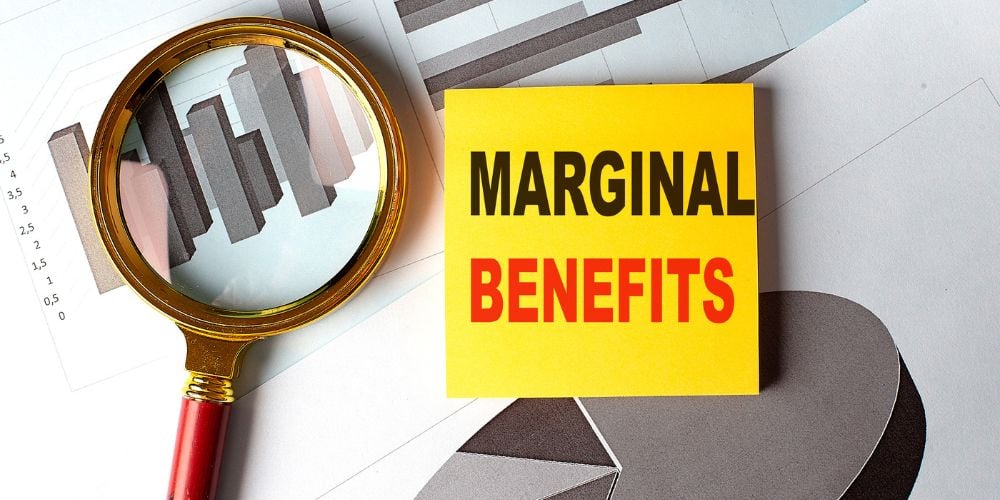In the world of economics, two concepts play crucial roles in the decision-making process of businesses and individuals alike: marginal cost and marginal benefit.
Grasping these concepts is essential for anyone looking to make informed choices in a variety of contexts, from personal finance to corporate strategy.
This article discusses marginal cost vs marginal benefit, explores their relationship, and examines their practical applications in real-world scenarios.
What Is Marginal Cost?
Marginal cost represents the expense incurred to produce one additional unit of a good or service. It is a critical concept in economics and business, as it helps firms decide the level of production that maximizes profit.
Calculating marginal cost involves taking into account the total change in costs resulting from changing the output level. This can include direct materials, labor, and other variable costs.
Various factors influence marginal cost. These can range from the cost of materials and labor to technology or the scale of production.
For example, if a factory increases its production from 100 to 101 widgets, the cost associated with producing that 101st widget is the marginal cost.

What Is Marginal Benefit?
Marginal benefit, on the other hand, refers to the additional satisfaction or utility that a person receives from consuming an extra unit of a good or service.
It is an essential consideration for both consumers and producers, guiding them in making decisions that maximize utility or profit.
As with marginal cost, the determination of marginal benefit is rooted in the change that an additional unit brings, this time in terms of benefit rather than cost.
In the context of consumer decision-making, marginal benefit influences how much of a product someone is willing to purchase at a given price.
An example of marginal benefit might be the amount of enjoyment a person gets from buying a second cup of coffee in a day.
The Relationship Between Marginal Cost and Marginal Benefit
The relationship between marginal cost and marginal benefit is the cornerstone of economic theory. It suggests that the optimal point of production or consumption—for maximizing profit or utility—is where marginal cost equals marginal benefit.
When the marginal benefit of an additional unit exceeds its marginal cost, it is profitable or beneficial to increase production or consumption.
Conversely, when marginal cost surpasses marginal benefit, it indicates that it’s time to reduce output or usage.
Marginal Cost vs Marginal Benefit: Understanding the Differences
Despite their interrelated nature, marginal cost and marginal benefit are distinct concepts. Marginal cost focuses on the production side, examining the cost implications of additional production.
Marginal benefit, meanwhile, looks at the consumption or utility side, measuring the added value or satisfaction from consuming an extra unit.
Understanding the differences between these two is crucial for making effective economic decisions, whether it’s a business assessing its production levels or an individual contemplating a purchase.
Practical Applications in Business and Economics
Applying the principles of marginal cost and marginal benefit can significantly impact business strategies and economic policies.
In business, these concepts inform decisions about how much to produce, setting prices, and entering new markets.
For example, a company might use marginal cost analysis to determine the price point at which increasing production no longer yields significant returns.
Similarly, understanding marginal benefit allows businesses to price their products in a way that maximizes profit by aligning with the value customers place on an additional unit.

Challenges in Measuring Marginal Cost and Benefit
Despite their theoretical simplicity, calculating marginal cost and marginal benefit can be complex in practice.
This complexity stems from difficulties in accurately measuring the change in costs and benefits associated with a marginal change in production or consumption.
These challenges, however, do not diminish the importance of these concepts in guiding economic decision-making.
Frequently Asked Questions
What is an example of Marginal Cost in everyday life?
In everyday life, the marginal cost can occur in situations such as the additional cost of using more electricity when installing another appliance in your home.
How does Marginal Benefit affect consumer choice?
Marginal benefit affects consumer choice by determining the maximum amount a consumer is willing to pay for an additional unit of a good or service, based on the added satisfaction it provides.
How do businesses use Marginal Cost and Benefit to set prices?
Businesses use these concepts to find the optimal price point where the cost of producing one more item is just offset by the income it generates, ensuring maximum profitability.
Conclusion
Marginal cost and marginal benefit are foundational concepts in economics that guide businesses and individuals in making decisions that optimize resource allocation.
By carefully analyzing these factors, economic actors can make choices that enhance efficiency and maximize utility. As we navigate an ever-changing economic landscape, the understanding and application of these principles will continue to be of paramount importance.
Understanding and applying marginal cost and marginal benefit is essential for making efficient decisions that reflect economic realities.
Whether in personal finances, business strategy, or policy making, these concepts offer a lens through which to view the implications of our choices more clearly.


 Tags:
Tags:










